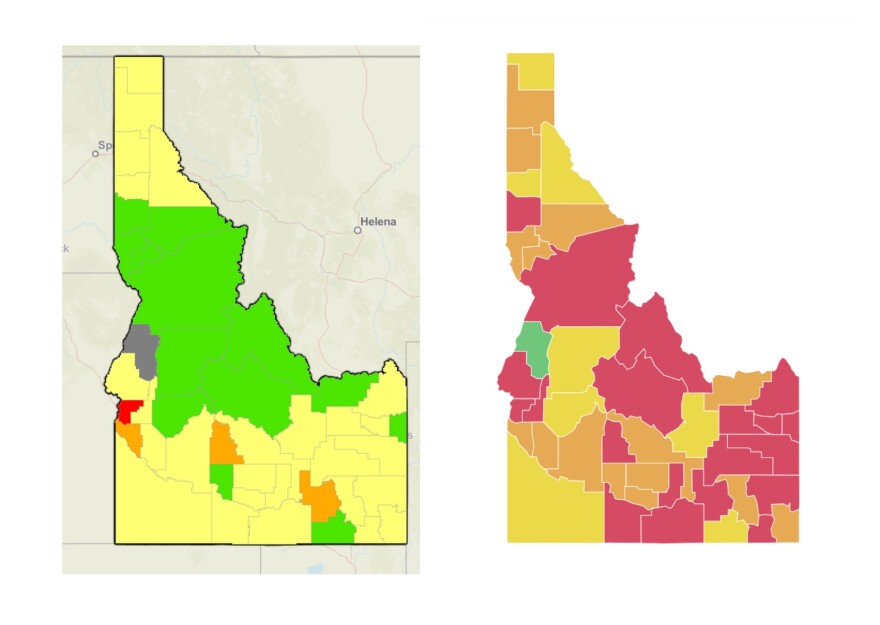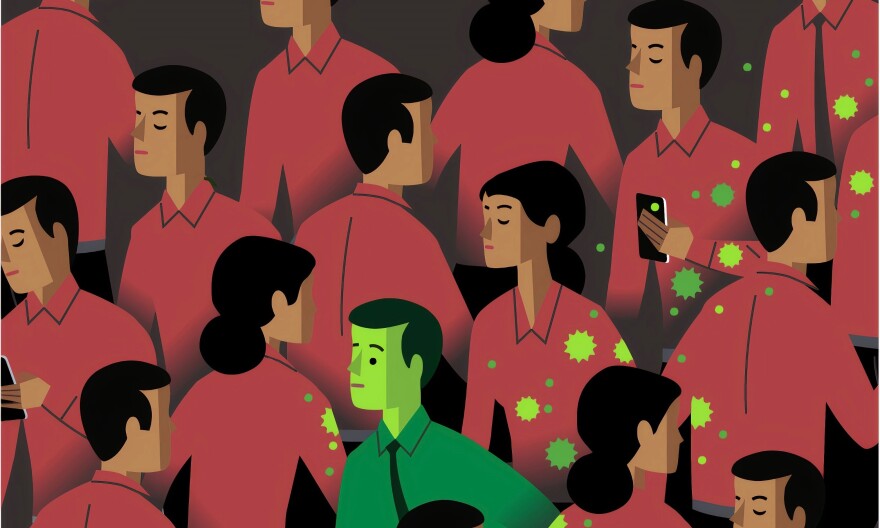Red, orange, yellow, green. These colors, referenced over and over again in public meetings, translate to COVID-19 risk levels set by Idaho's public health district boards. Blaine County, in south central Idaho, is ditching its health district’s colors for stricter ones set by researchers at the Harvard Global Health Institute.
Over the course of the pandemic, Blaine County has stood out. It had Idaho’s first surge in coronavirus cases and it's implemented some of the strictest coronavirus mitigation efforts in the state.
“I think as a result, we’ve become very proactive,” said Angenie McCleary, a Blaine County Commissioner who sits on the South Central Public Health Board of Health.
Blaine was the first county in the state to have a stay-at-home order and was one of the few places to implement stricter measures than the state during that time by putting a halt to the construction industry. It's also a county in which four out of five cities have mask mandates.
Now, it’s using the more stringent metrics set by the Harvard Global Health Institute, instead of the South Central Public Health District, to determine its coronavirus risk level color.
Risk levels are set by each public health district based on different metrics, but usually the seven-day-average of daily case numbers and hospital capacity are the most important factors. They give localities recommendations on things like large gatherings and visits to long-term care facilities, but their primary purpose thus far has been as benchmarks for school boards to decide how to operate schools.
South Central Public Health District's thresholds, approved by the board made up of mostly county commissioners from the Magic Valley, were focused more on "suppression," and figuring out how counties could live with the virus versus eliminate it, McCleary said.
"I don’t believe that South Central Public Health District Board – and I’m on that board – is willing to take the kind of actions to mitigate this pandemic that Blaine County wants to see," she said.
The maps below show risk level assessments set by Idaho's public health districts (left) and those set by the Harvard Global Health Institute (right). The groups use different metrics to determine the color level of a county. For example, Harvard says having a case rate above 25 per 100,000 puts a county in the red, whereas Idaho health districts range from saying a county would need 20 to 50 cases per 100,000 to be in the red. Idaho's public health districts update the risk levels differently – some daily, some weekly and one every two weeks. Harvard's map updates more frequently.

The South Central Public Health District is supportive of Blaine County’s move to Harvard’s metrics. It's producing a weekly report based on those numbers for the county. The most recent one has Blaine in the yellow category, whereas the public health district's metrics would’ve had it in green. McCleary thinks Blaine could move to orange by the next update this Thursday.
During health board meetings this summer, several public health directors and trustees opted for more localized approaches to determining risk levels versus national assessments because those plans put some of Idaho's smallest counties in the highest risk categories, even when they see a small uptick in daily case numbers.
But using different metrics also leaves room for discrepancies. Idaho's coronavirus dashboard labels Madison County as a local hotspot, both for total number of cases in the past week and cases per capita. Harvard puts Madison in the red, or the highest risk category. So does a report out from the White House this weekend, which labels the county as one for the state to watch. But, as of Tuesday, Eastern Idaho Public Health had Madison County in the yellow category, or at a "moderate risk."
With tourism and the impact from the virus during the first surge, McCleary thinks Harvard's plan is the right model for Blaine County at this time.
Blaine County is also looking to Harvard’s numbers to determine school plans. Right now students attend schools two days a week in a hybrid model. The school district is using color levels to see which cities its sports teams can compete against. Recently, games have been cancelled against teams in Gooding and Minidoka because their rates were too high, according to Harvard's numbers.
In the past week, Blaine County has seen an uptick in daily case numbers, but McCleary hopes the cautious approach can help keep things under control.
Find reporter Rachel Cohen on Twitter @racheld_cohen
Copyright 2020 Boise State Public Radio



